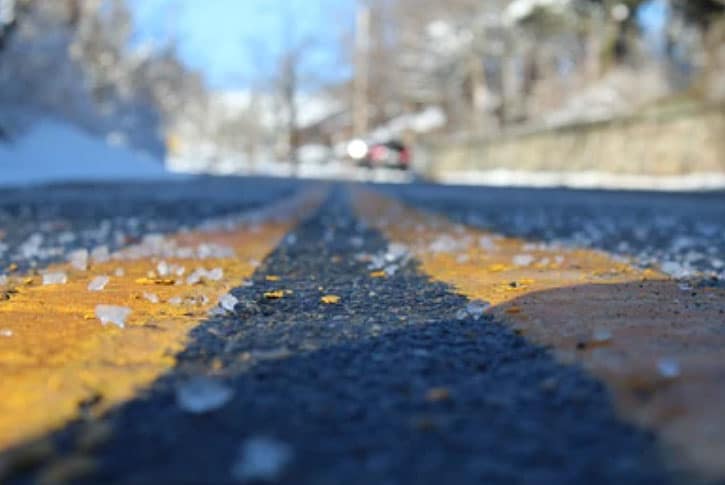Road Salting as a Cause of Chloroform in Groundwater?
Summary: Chloride ions can be transformed to reactive chlorine species by soil enzymes. Reactive chlorine thus formed can combine with soil organic carbon to form natural chlorinated organic compounds, including the nearly ubiquitous volatile organic compound, chloroform. These processes may cause natural chloroform concentrations as high as 2 ug/L in groundwater. During an ISRA remedial investigation, Princeton Geoscience delineated a plume of chloroform-impacted groundwater, with maximum detected concentrations of 110 ug/L. We attributed the groundwater impact to natural halogenation of organic matter in soils, enhanced by an influx of chloride from nearby deicing operations. The New Jersey Department of Environmental Protection approved our site characterization and accepted Monitored Natural Attenuation as a remedy for this area. Ongoing research indicates that other natural mechanisms, such as direct release from salt crystal fluid inclusions, may contribute chloroform to the subsurface environment.
After delineating a plume of chloroform contaminated groundwater to its origin at the edge of a parking lot and finding no evidence of spills or other conventionally considered sources, Princeton Geoscience performed a literature review to assess alternative sources. We learned that in recent years, the traditional view of chloride and other halide ions as essentially inert substances in groundwater has been challenged by field research in natural systems. In fact, halide ions are part of a complex biogeochemical cycle, with the natural production of organohalogens as one effect.
Naturally produced chloroform, for example, has been documented at concentrations as high as 2 ug/L in pristine forest environments where low levels of chloride in precipitation interact with organic carbon in the soil. Chloroform is one of the most ubiquitous volatile organic compounds in groundwater and the sources of impact are often not well documented.
Because chloroform concentrations in groundwater at the subject site were high (up to 110 ug/L), we considered a purely natural origin unlikely. However, we noted that the highest chloroform concentrations occurred at the downgradient edge of the parking lot, where salt-laced deicing melt waters run off to adjacent soil. We determined that the runoff would create an abundance of salt-derived chloride ions in the soil, possibly enhancing natural chloroform formation processes. Subsequently, we reviewed the idea with researchers from the University of Linkopping, Sweden, ultimately developing a novel understanding of the source and a practical remedial approach that was accepted by NJDEP.
In the Remedial Investigation Report, we attributed the groundwater impact to deicing salt enhanced natural halogenation of soil organic matter, and recommended Monitored Natural Attenuation (MNA) with stormwater Best Management Practices as a remedy for this area. The New Jersey Department of Environmental Protection approved our site characterization and accepted the proposed remedy.
Presently, Princeton Geoscience is funding and participating in several studies of natural and enhanced formation of chloroform and other volatile organic compounds in groundwater. Ongoing research indicates that other natural mechanisms, such as direct release from salt crystal fluid inclusions, may contribute chloroform to the subsurface environment.
